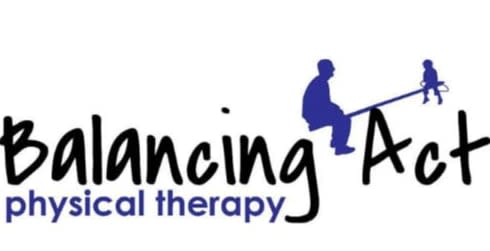Beyond Pills: A Real-World Look at Alternative Pain Management

Posted on May 14th, 2025
Living with pain isn’t just a physical struggle—it chips away at your energy, your patience, and your sense of control. While mainstream medicine often throws prescriptions at the problem, plenty of people are finding relief in other ways. You don’t have to live at the mercy of your discomfort or feel boxed into just one solution. There’s an entire world of alternative pain management that blends natural remedies, therapeutic practices, and everyday lifestyle changes that actually stick.
The Quiet Strength of Herbal Allies
There’s something grounding about using what grows from the earth to treat the aches in your body. Herbs like turmeric, ginger, and willow bark have built reputations not just from tradition, but because they work. Turmeric in particular gets attention thanks to its curcumin content, which naturally quiets inflammation and eases joint discomfort. You can work these into meals, teas, or supplements—but the real trick is consistency, not expecting a miracle in one sitting.
Touch Therapy That Hits Deeper
Massage therapy isn’t just about luxury spa days—it’s about giving your nervous system a break. Chronic pain tends to put your whole body on high alert, and regular bodywork can short-circuit that loop. Different approaches like myofascial release or trigger point therapy work especially well for people dealing with long-term tension or postural issues. It’s not always comfortable, but when done right, it creates space in your body you didn’t know was tight.
Mind Over Matter, One Thought at a Time
The way you think about pain doesn’t make it disappear, but it absolutely shapes how much space it takes up in your life. A hopeful mindset doesn’t mean pretending everything’s fine—it means choosing not to let pain define your entire story. Even on rough days, finding small wins and focusing on what’s still possible helps you move forward instead of getting stuck in frustration. Practical strategies like mindfulness, goal-setting, and learning to reframe negative thoughts can make a real difference in how you carry the weight of your experience.
The Role of Physical Therapy in Reclaiming Movement
When pain limits how you move, you start to lose confidence in your body’s abilities—and that’s where physical therapy steps in. It's not just about rehab after surgery; it’s a customized approach to restoring balance, range of motion, and strength where it’s been compromised. Working with Balancing Act Physical Therapy can give you that one-on-one attention that zeroes in on what your body actually needs, not just what a chart suggests. Over time, these guided sessions build up your resilience and help keep flare-ups from running the show.
Acupuncture: Tiny Needles, Big Shifts
There’s a reason acupuncture hasn’t faded away despite being thousands of years old—it taps into the body’s own repair systems. By stimulating specific points, practitioners aim to redirect energy flow and kickstart healing in targeted areas. For chronic conditions like migraines, back pain, or fibromyalgia, acupuncture offers a drug-free option that feels more like collaboration than control. The sessions themselves are surprisingly calming, and for many people, they become part of their routine—like therapy, but for your body’s energy.
Food That Doesn’t Fan the Flames
Pain often feeds off inflammation, and what’s on your plate can either calm or fuel the fire. Processed foods, sugar, and excess dairy or gluten tend to be common culprits that sneak into your meals without much notice. On the flip side, eating more leafy greens, fatty fish, berries, and nuts starts to reshape the internal landscape—like cleaning up the kitchen before cooking again. This isn’t about going on some restrictive cleanse; it’s about slowly shifting your meals toward being something your body actually wants to work with.
Breath, Stillness, and the Brain-Body Loop
It might sound too simple to be effective, but learning how to breathe deeply and sit in stillness changes how your brain processes pain. Meditation, breathwork, and practices like yoga work on the idea that pain isn’t just physical—it’s tied to stress, emotion, and memory. When you train your nervous system to come down from its fight-or-flight state, pain doesn’t hit quite as hard. Over time, you develop a kind of inner grit that helps you face each day without flinching at every twinge.
Sleep: The Overlooked Recovery Tool
It’s wild how often sleep gets ignored in the pain conversation when it’s one of your most powerful allies. Poor sleep doesn’t just make pain feel worse—it dulls your ability to cope with it. Creating a solid wind-down routine, avoiding screens late at night, and even looking into natural sleep aids like magnesium or valerian root can make a difference. You don’t need perfect sleep every night, but aiming for a steady rhythm gives your body the time it needs to repair from the inside out.
What works for someone else might leave you cold, and that’s okay. Pain management is never one-size-fits-all, especially when you’re exploring paths outside of prescription meds. The real power in these alternative methods is how they invite you to participate in your own healing. Whether it’s a morning turmeric tea, a weekly PT session, or a quiet evening of breathwork, the small, repeated choices add up—and eventually, they help you remember that your body isn’t broken, just in need of new ways to be supported.
Ready to take the next step toward lasting relief? Visit Balancing Act Physical Therapy to schedule your personalized evaluation and start moving with confidence again.
Get in Touch
Get in Touch with the Experts at Balancing Act Physical Therapy
Don't let pain and discomfort hold you back from living your life to the fullest. Contact our team of experienced physical therapists today and take the first step towards a healthier, happier you.

